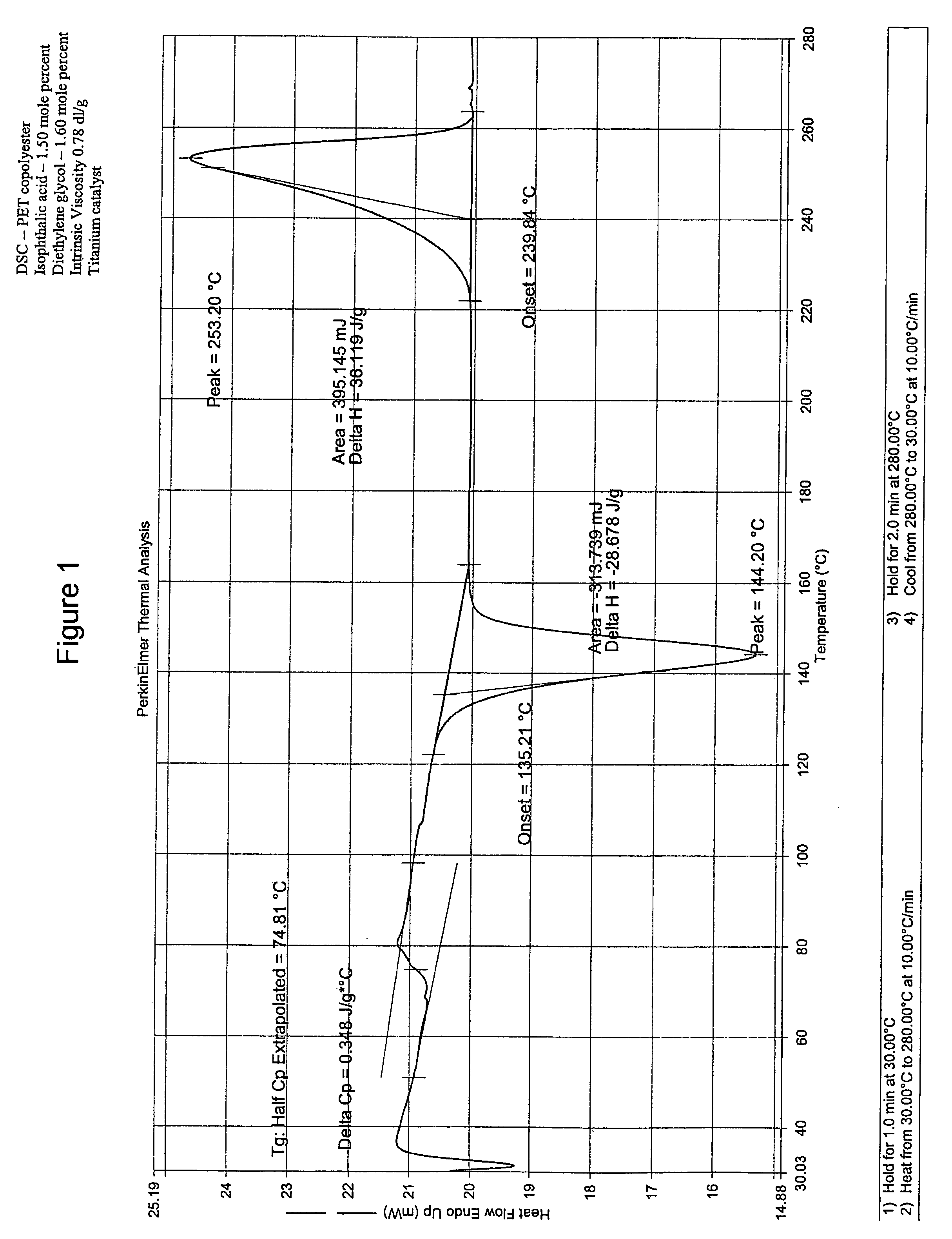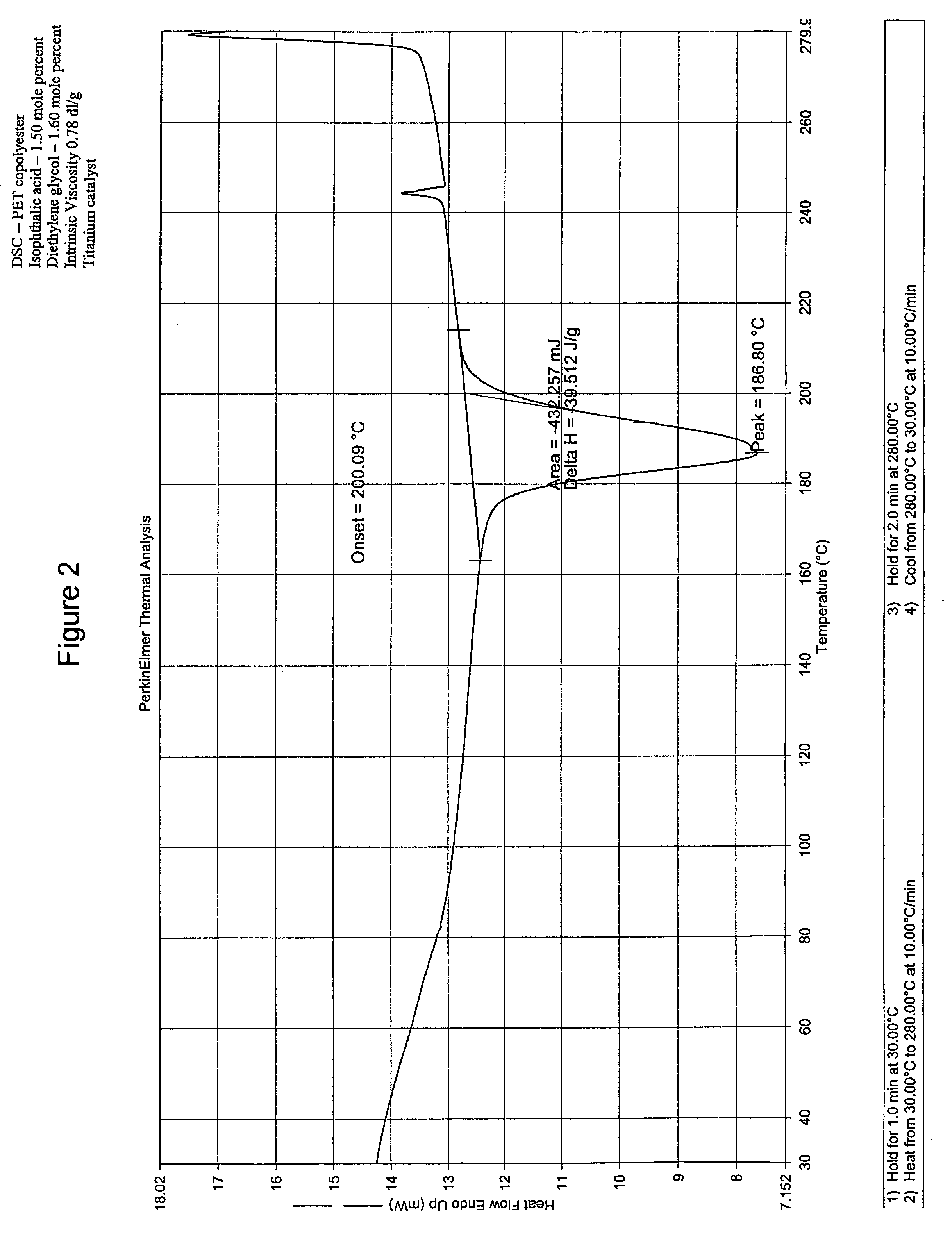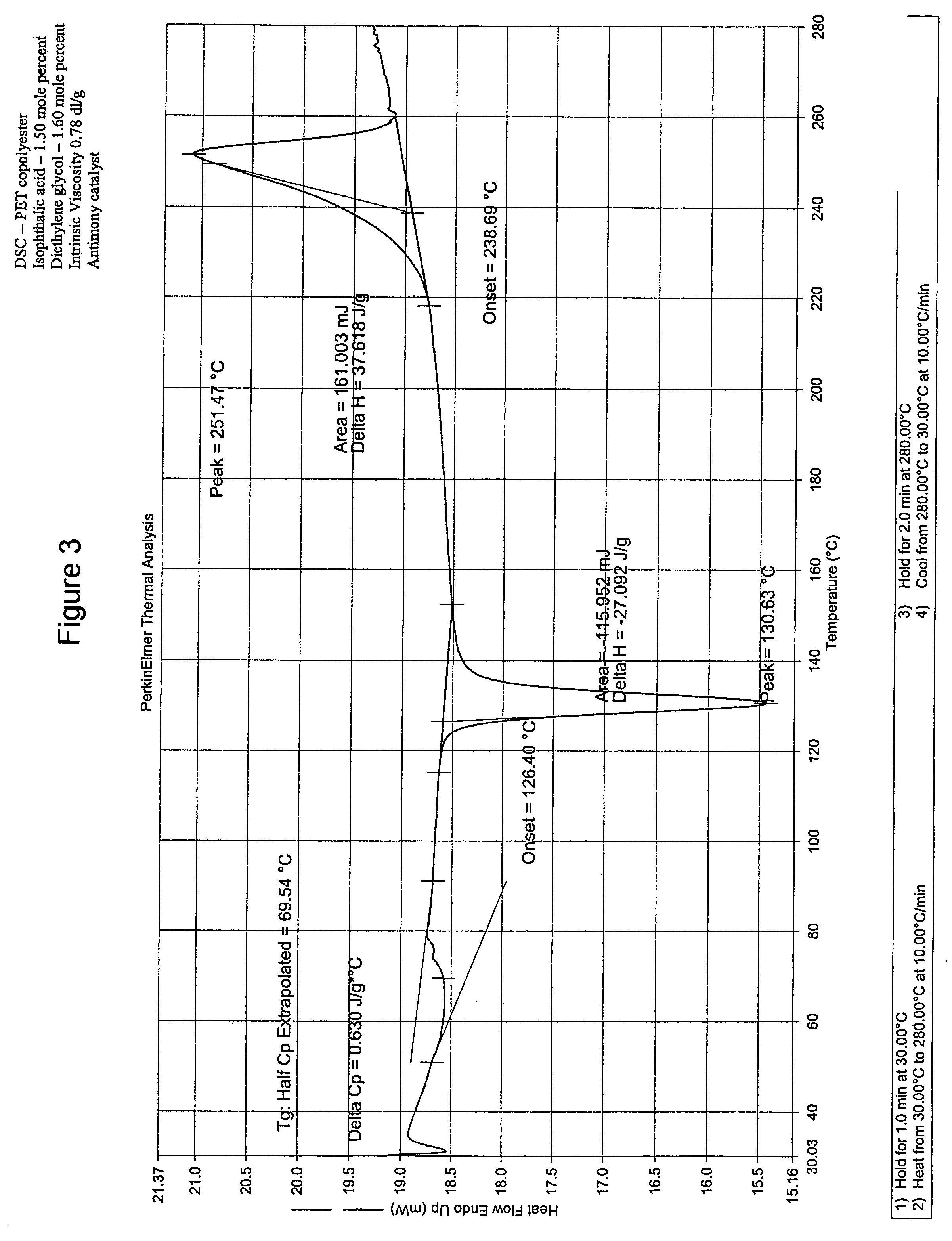Slow-crystallizing polyester resins
- Summary
- Abstract
- Description
- Claims
- Application Information
AI Technical Summary
Benefits of technology
Problems solved by technology
Method used
Image
Examples
example 1
[0098]A two-liter polyethylene terephthalate bottle test parison was produced from a standard resin (i.e., Wellman's PERMACLEAR® HP806 polyester resin). This test parison required eight reheat zones for production of a straight-wall, two-liter bottle. At an overall oven power percentage of 80 percent, the reheating profile for this PERMACLEAR® HP806 test parison is shown in Table 1:
[0099]
TABLE 1Heating ZonesPower output (%)174260355455555668786874
[0100]After establishing this reheating profile, two samples were prepared from an antimony-catalyzed polyethylene terephthalate resin having less than about 6 mole percent comonomer substitution. One sample included about 11 ppm of a carbon-based heat-up rate additive (Resin A) and the other sample, a control, included no heat-up rate additive (Resin B). Besides the presence of a heat-up rate additive, Resin A and Resin B were otherwise identical. The reheat performance (i.e., via surface temperature measurements) for both Resin A and Resi...
PUM
| Property | Measurement | Unit |
|---|---|---|
| Temperature | aaaaa | aaaaa |
| Temperature | aaaaa | aaaaa |
| Temperature | aaaaa | aaaaa |
Abstract
Description
Claims
Application Information
 Login to View More
Login to View More - R&D
- Intellectual Property
- Life Sciences
- Materials
- Tech Scout
- Unparalleled Data Quality
- Higher Quality Content
- 60% Fewer Hallucinations
Browse by: Latest US Patents, China's latest patents, Technical Efficacy Thesaurus, Application Domain, Technology Topic, Popular Technical Reports.
© 2025 PatSnap. All rights reserved.Legal|Privacy policy|Modern Slavery Act Transparency Statement|Sitemap|About US| Contact US: help@patsnap.com



